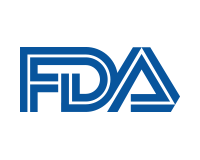United States Department of Health and Human Services

United States Food and Drug Administration: Publications
Date of this Version
2017
Document Type
Article
Citation
Chemical Analysis of Non-antimicrobial Veterinary Drug Residues in Food, First Edition. Edited by Jack F. Kay, James D. MacNeil and JianWang.
Abstract
The last 40 years have brought enormous changes to the aquaculture industry. The farming of fish and of seafood products has been continuously increasing from 3.9% by weight in 1970 to 36% in 2006 according to theWorld Health Organization (WHO) and Food and Agriculture Organization (FAO) of the United Nations.1 The global trend of aquaculture development gaining importance in total fish supply has remained uninterrupted. Farmed food fish contributed a record 42.2% of the total 158 million tonnes of fish produced by capture fisheries and aquaculture in 2012 (Figure 9.1). This compares with just 13.4% in 1990 and 25.7% in 2000. Since 2008, Asia has been producing more farmed fish than wild catch, and its aquaculture share in total production reached 54% in 2012, when European production rose to 18% and other continents to less than 15%.1 The 15 main producer countries accounted for 92.7% of all farmed food fish and seafood production in 2012. In the same period, there was a considerable intensification of seafood trading worldwide.
Fish is the main valued export commodity from the vast majority of the developing countries before coffee, natural rubber, cocoa, and sugar.1 According to the seafood trade flows in 2010 from Natale et al.,2 China appears as the major exporter to the rest of the world with also an increasing importance of Vietnam, Thailand, Chile, India, and Indonesia. China has also become the world’s third largest importing country after the United States of America and Japan (Figure 9.2). The European Union (EU) is the largest market for imported fish and fishery products, and its dependence on imports is still growing. Such a food fish farming increase cannot be further intensified without controlling the zoosanitary aspects of this agri-food industry.
Included in
Dietetics and Clinical Nutrition Commons, Health and Medical Administration Commons, Health Services Administration Commons, Pharmaceutical Preparations Commons, Pharmacy Administration, Policy and Regulation Commons


Comments
U.S. government work.